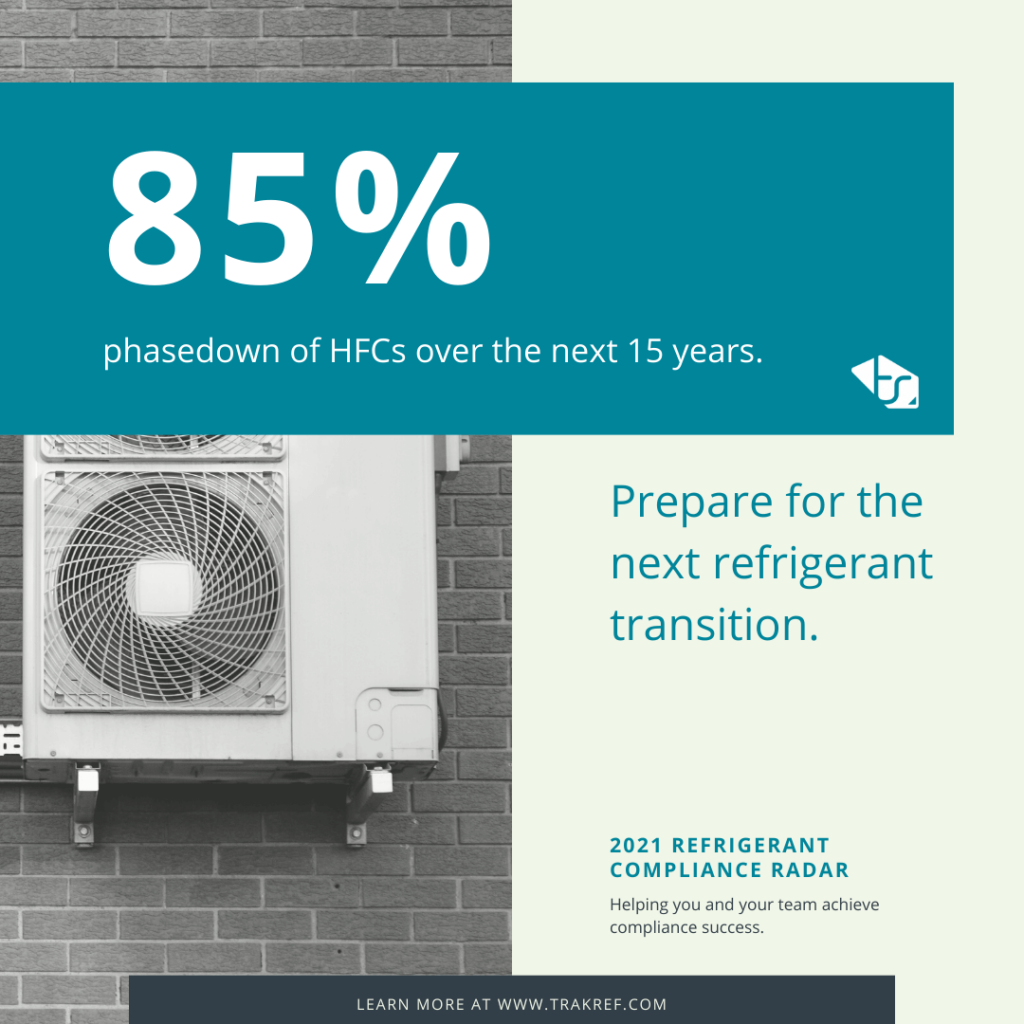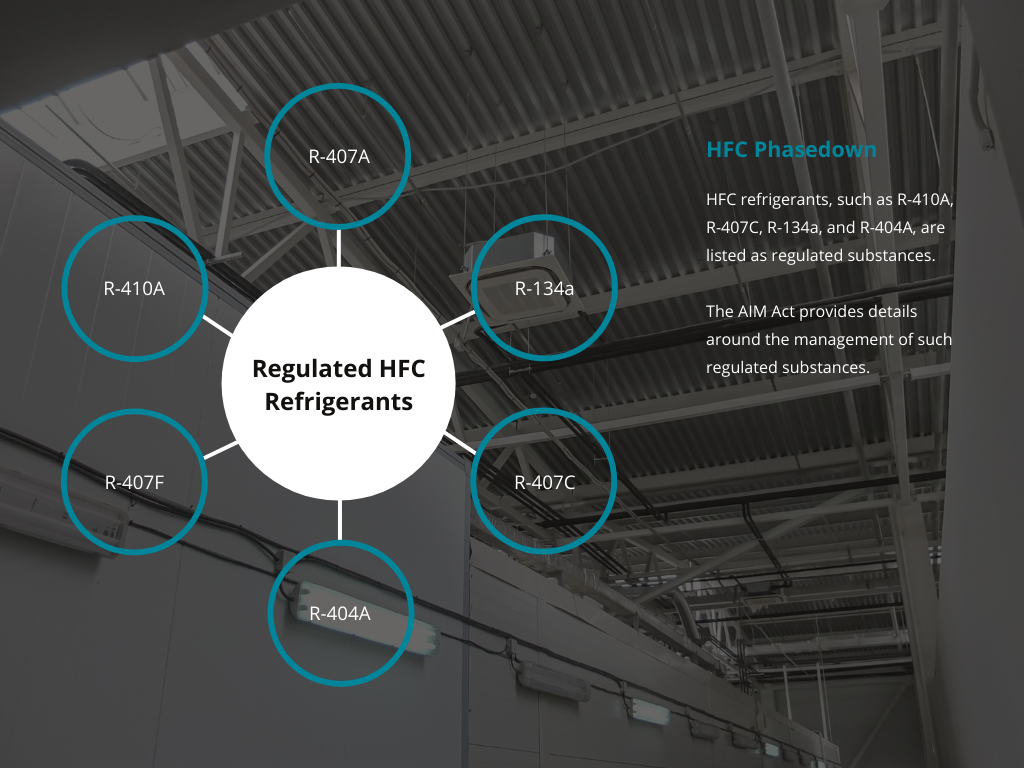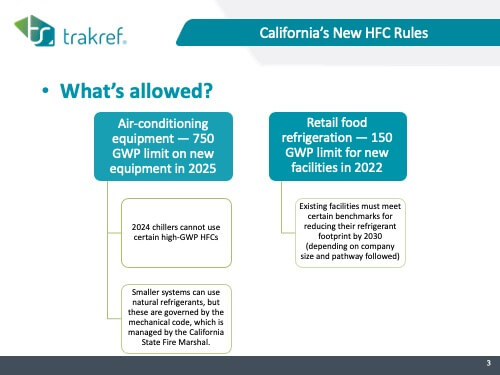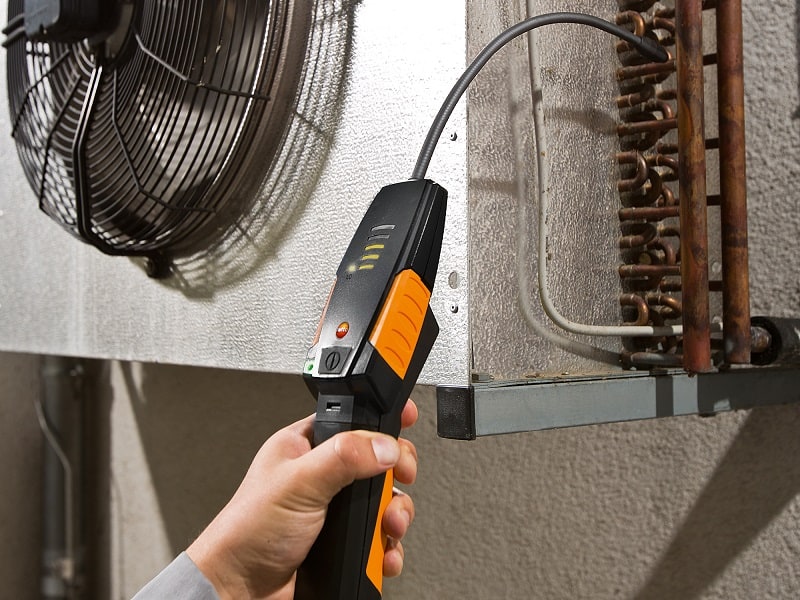
Trakref
Refrigerant Compliance in 2021: What to Have on Your Radar

Do you know what should be on your radar for refrigerant compliance and refrigerant tracking in 2021?
Now that plans for an HFC phase down in the United States have solidified for environmental sustainability, one thing is clear for refrigerant compliance in 2021: Change. Very likely, refrigerant handling requirements for hydrofluorocarbons (HFCs) will evolve in the near-term at multiple regulatory levels.
Thus, now is the time to review important refrigerant compliance trends related to your refrigeration equipment that could impact your personnel, equipment, and materials in the year ahead. It may also impact your ESG reporting and ability to answer sustainability audit questions.
In this post, discover our recommendations of what to have on your radar for refrigerant compliance in 2021:
New HFC phasedown law: A catalyst for change
Did you hear? The latest pandemic relief package includes bipartisan energy provisions, one of which is on an HFC phase-down in the United States.
Known as the American Innovation and Manufacturing Leadership (AIM) Act, the law sets out to phase down HFC refrigerants by 85% over the next 15 years. It establishes baselines; allowances; and a schedule for implementation, and significant new alternatives.
Popular HFC Refrigerants Regulated

HFC refrigerants, such as R-410A, R-407C, R-134a, and R-404A, are listed as regulated substances because of their high global warming potential (GWP). The AIM Act provides details around the management of such regulated substances. It states,
“Not later than 24 months after the date of enactment of this Act, the Administrator shall … promulgate regulations to control, where appropriate, any practice, process, or activity regarding the servicing, repair, disposal, or installation of equipment that involves a regulated substance.”
Shift brings a sense of certainty

This signals a major shift from trends of mixed messages on HFCs in the recent years prior. What once looked like regulatory uncertainty for HFCs level for the foreseeable future has changed.
This new HFC phasedown law will significantly impact the control and management of HFCs at the federal level. In fact, it could translate over into a revision or two of the EPA Section 608 program and the EPA SNAP Program.
The point is, HFC refrigerant compliance is heating up in 2021 both at the federal and state level, which brings us to our next point:
Several state HFC programs continue to solidify
Over the past few years, numerous states have introduced HFC regulations for decreasing our environmental footprint, and we will continue to see states make progress with these new programs.
California
As an example, in addition to its HFC prohibitions which were enacted in 2019, the State of California has additional new HFC refrigerant rules that include GWP limits.
- 750 GWP limit for new air-conditioning equipment in 2025;
- 150 GWP limit for new air-conditioning equipment in 2022;
In addition to these GWP limits for certain refrigeration and air-conditioning equipment, existing retail food refrigeration facilities must meet certain benchmarks for reducing their refrigerant by 2030.

These new California HFC requirements will impact service requirements and equipment purchasing decisions. If you are looking for a refresher on these details, please check out the on-demand video recording of our recent LIVE Compliance Open Mic event on California’s new HFC requirements.
Other states following
California is but one state that is implementing its own HFC refrigerant requirements. Other states, including Colorado and New York, are following closely behind. In fact, both Colorado and New York have HFC prohibition dates that affect end-users of equipment.
Spotlight on fourth generation of refrigerants
Being at the onset of the gradual phasedown of HFC refrigerants in the United States means that there will be more spotlights on the fourth generation of refrigerants, such as HFO and HC refrigerants.
Rise of A2L refrigerants
This does not come without additional new servicing requirements. For instance, two of the most widely known HFO refrigerants, HFO-1234yf and HFO-1234ze, are classified as A2Ls, or mildly flammable, per ASHRAE Standard 34.
Such flammable properties will heighten the health and safety aspect of refrigerant management.
What’s to come can lead to better refrigerant management… if you’re prepared
As you can see, there are numerous changes we expect to happen to refrigerant compliance in 2021. While it is complex and fast-moving, the fact is that what’s to come can lead to better refrigerant management and corporate sustainability… if you’re prepared.
That’s where the refrigerant geeks at Trakref come in. With over 25+ years of experience, we’re here to simplify HVACR and refrigerant compliance for you. We’re a software corporation that has been in the regulatory compliance calendar software and environmental compliance software space for years. As an environmental software provider, we make sure our refrigerant capabilities will keep you in compliance with new regulations. Get in touch with us for a demo today.



